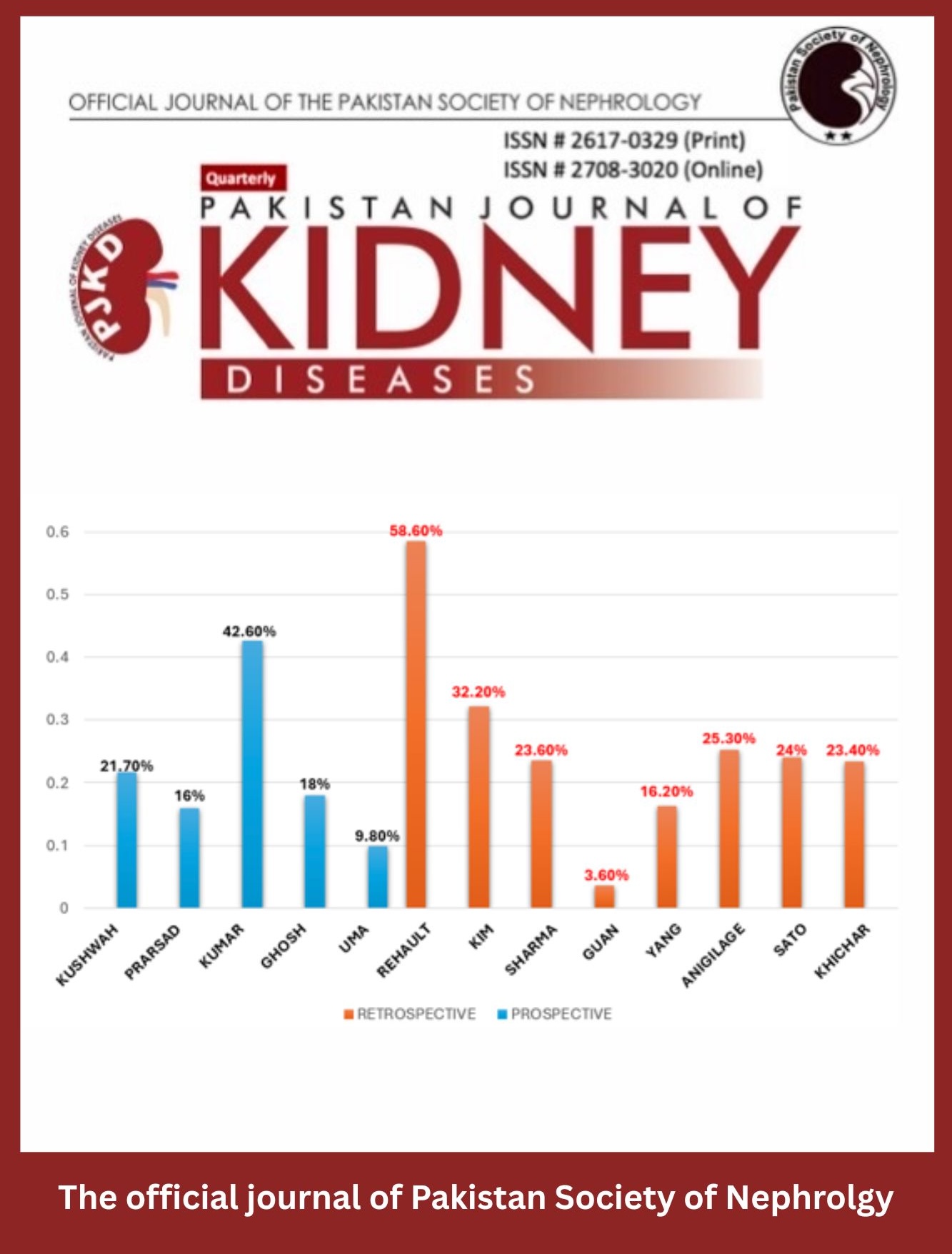Frequency Of Anti Double Stranded Dna Seropositivity In Patients With Lupus Nephritis
DOI:
https://doi.org/10.53778/pjkd92303Keywords:
systemic lupus erythematosus, lupus nephritis, kidney biopsy, dsDNA antibody, ANA, End stage Kidney DiseaseAbstract
INTRODUCTION:
Renal involvement affects approximately 38% of patients with systemic lupus erythematosus (SLE), with increased frequency and severity among African, Hispanic, and Asian populations. Lupus nephritis (LN) may present early or remain silent until progressing to end-stage renal disease (ESRD), contributing to significant morbidity. Variability in the prevalence of anti-double stranded DNA (anti-dsDNA) antibodies has been reported, and local data are scarce. This study aimed to assess the frequency of anti-dsDNA antibodies in patients with LN in our setting.
OBJECTIVE:
To determine the frequency of anti-dsDNA antibodies among patients with lupus nephritis.
METHODS:
A cross-sectional study was conducted at the Department of Nephrology, IKD, Peshawar, over six months (June–July 2020). A total of 139 patients meeting the American College of Rheumatology criteria for SLE and confirmed to have LN were evaluated. ELISA was used to detect anti-dsDNA antibodies.
RESULTS:
The mean age was 38 ± 9.91 years. Females comprised 66% of the cohort. Anti-dsDNA antibodies were present in 41% of patients.
CONCLUSION:
Anti-dsDNA antibodies were detected in 41% of patients with lupus nephritis, highlighting the importance of routine screening for early detection and management.
Downloads
Published
How to Cite
Issue
Section
License
Copyright (c) 2025 Pakistan Journal of Kidney Diseases

This work is licensed under a Creative Commons Attribution-NonCommercial 4.0 International License.



